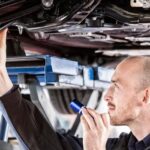
As the wholeworld continues grappling with the effects of climate change, sustainable practices become more important. One key area that is more important is the management of fleets, where sustainability practices improve air quality, minimize emissions, and save money for organizations & businesses.
What Are Green Fleets?
According to experts at Ree Auto, green fleets are those that focus on minimizing their carbon footprint. Because fuel consumption heavily contributes to environmental pollution, green fleets comprehensively target this aspect.
Of course, all fleets are created differently, each with a unique means of operation. This also means different approaches are used when adopting management strategies for green fleets.
Why Commercial Fleets Invest in Sustainability
Minimizing the impact of fleets on the environment is important for most fleet owners. The real challenge is finding ways to increase fleet sustainability without sacrificing the productivity of companies with their vehicles.
Fortunately, most approaches used to create more sustainable fleets will increase productivity and efficiency, too, and simultaneously minimize fuel costs in the long term. Through sustainability, you can also:
- Cultivate brand loyalty
- Improve the reputation of the business
Ways of Achieving a Sustainable Fleet
With fuel costs soaring high and federal and state governments expanding their environmental regulations, most business organizations look for several ways of making their vehicles go green and more sustainable. For example, California has already made progress through truck manufacturers.
These environmental regulations are more likely to impact the entire country. However, there are several strategies organizations can use to achieve sustainable fleets. Some of these ways include the following:
-
Asses Driver Habits
With many drivers getting a lot of pressure to hit targets, like tight delivery dates, it has become much easier to adopt bad driving habits in such stressful moments. This, in turn, leads to a more destructive and bigger carbon footprint.
To assess driver habits, you must use telematics and data management to monitor braking times, average speed, position, and fuel consumption. Fleet managers will then use those details to organize training and teach drivers to drive carefully.
-
Schedule Maintenance
Regular maintenance of fleets can prolong their lifespan, minimize missions, and improve the efficiency of fuel. Preventive maintenance programs to keep fleets in optimal condition encompass consistent maintenance and check-ups and may help minimize environmental impacts and save cash on fuel.
-
Determine the Needs of Infrastructure
You won’t be able to transition to electric vehicles without having a source of fuel. So, it is important to assess your needs depending on your specific goals. If possible, have a partner to guide you regarding charging solutions, depending on facility footprint, vehicle usage, and fleet size, among other factors.
Lowering costs and improving environmental impacts are important to commercial fleets. However, planning this transition to a sustainable fleet needs a complete view of operations and real-time data. This can be resource-heavy and expensive since most fleets that start electrification navigate new territory. Fortunately, it doesn’t have to be so if you plan things accordingly and use the right sustainability strategies.




